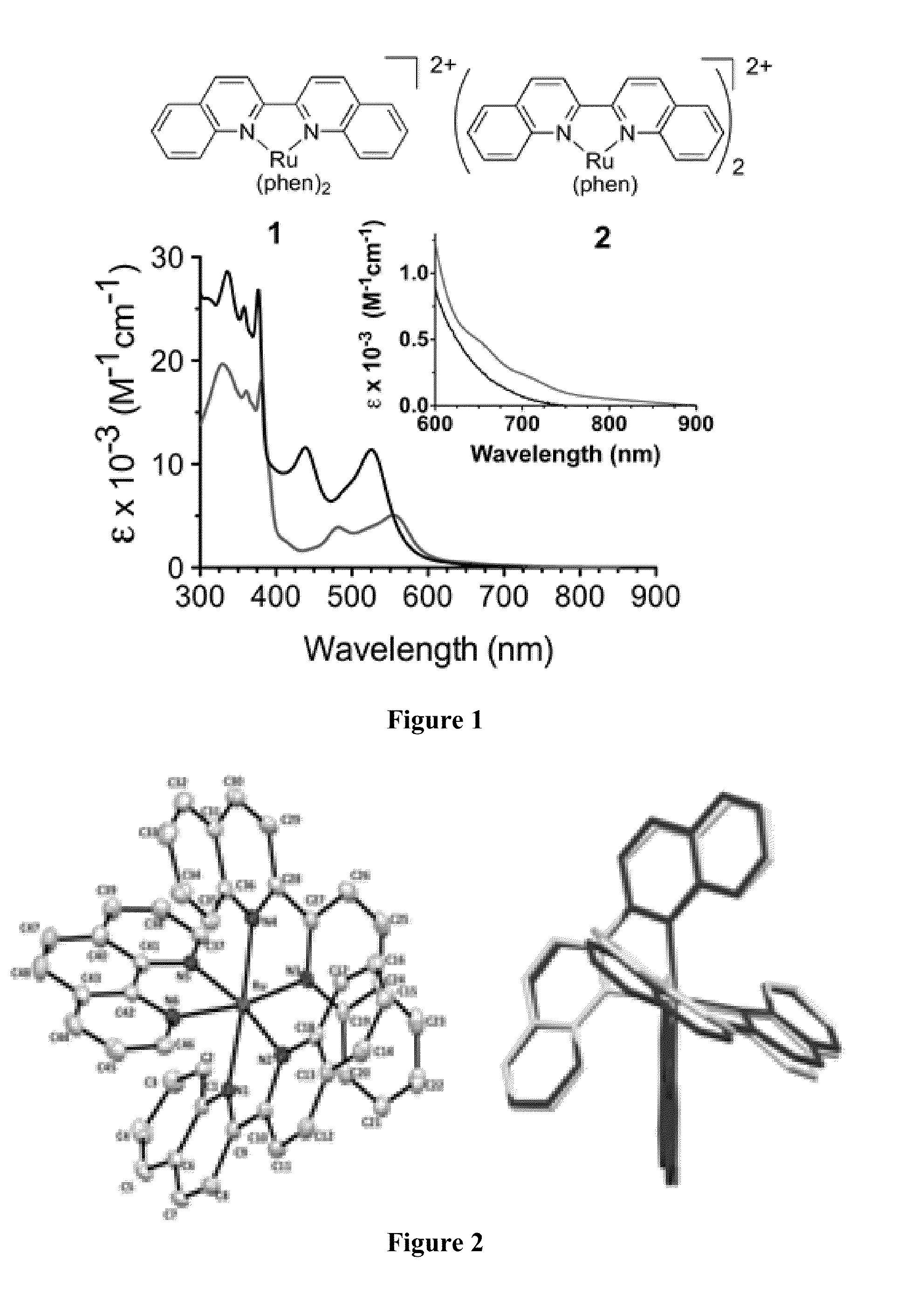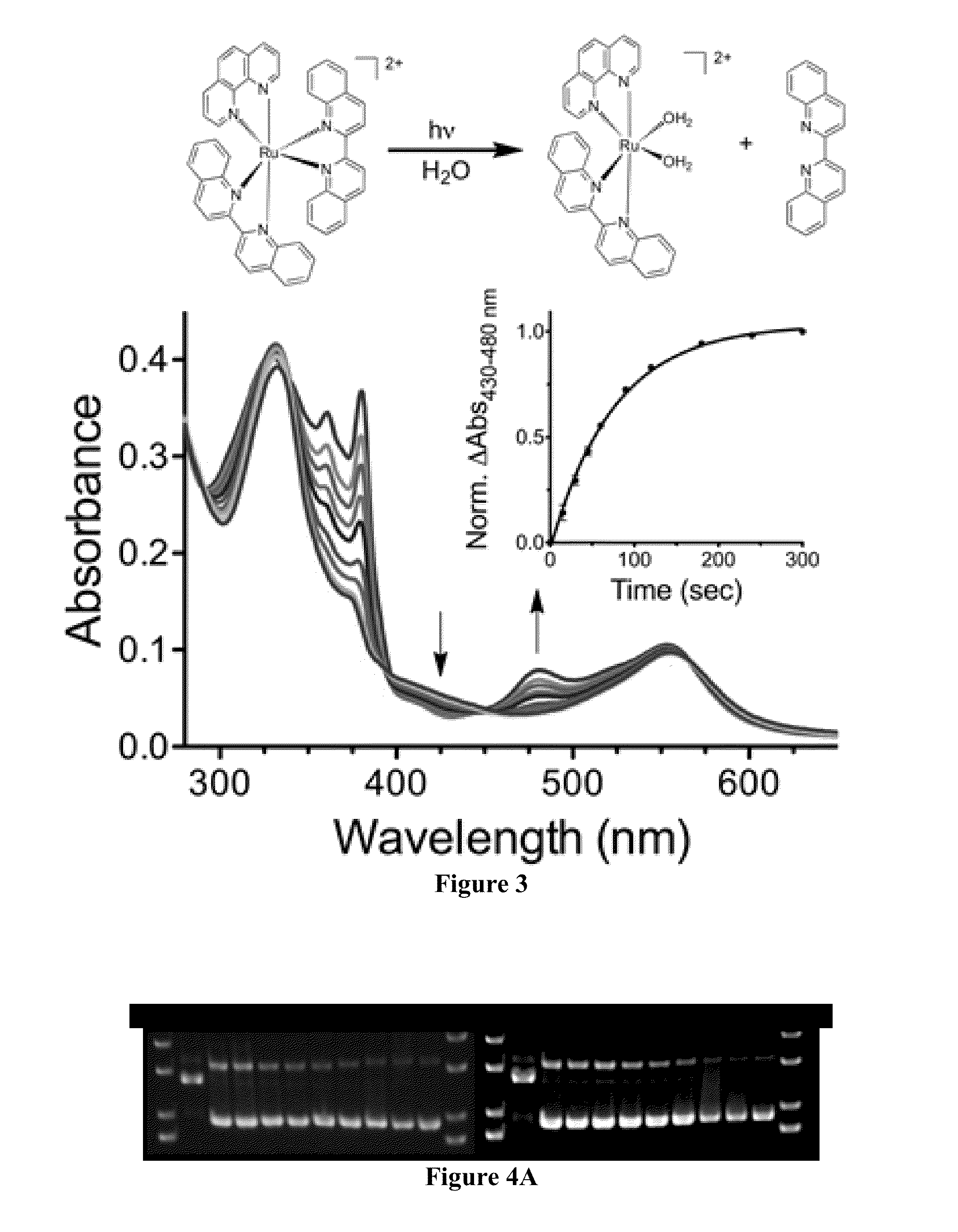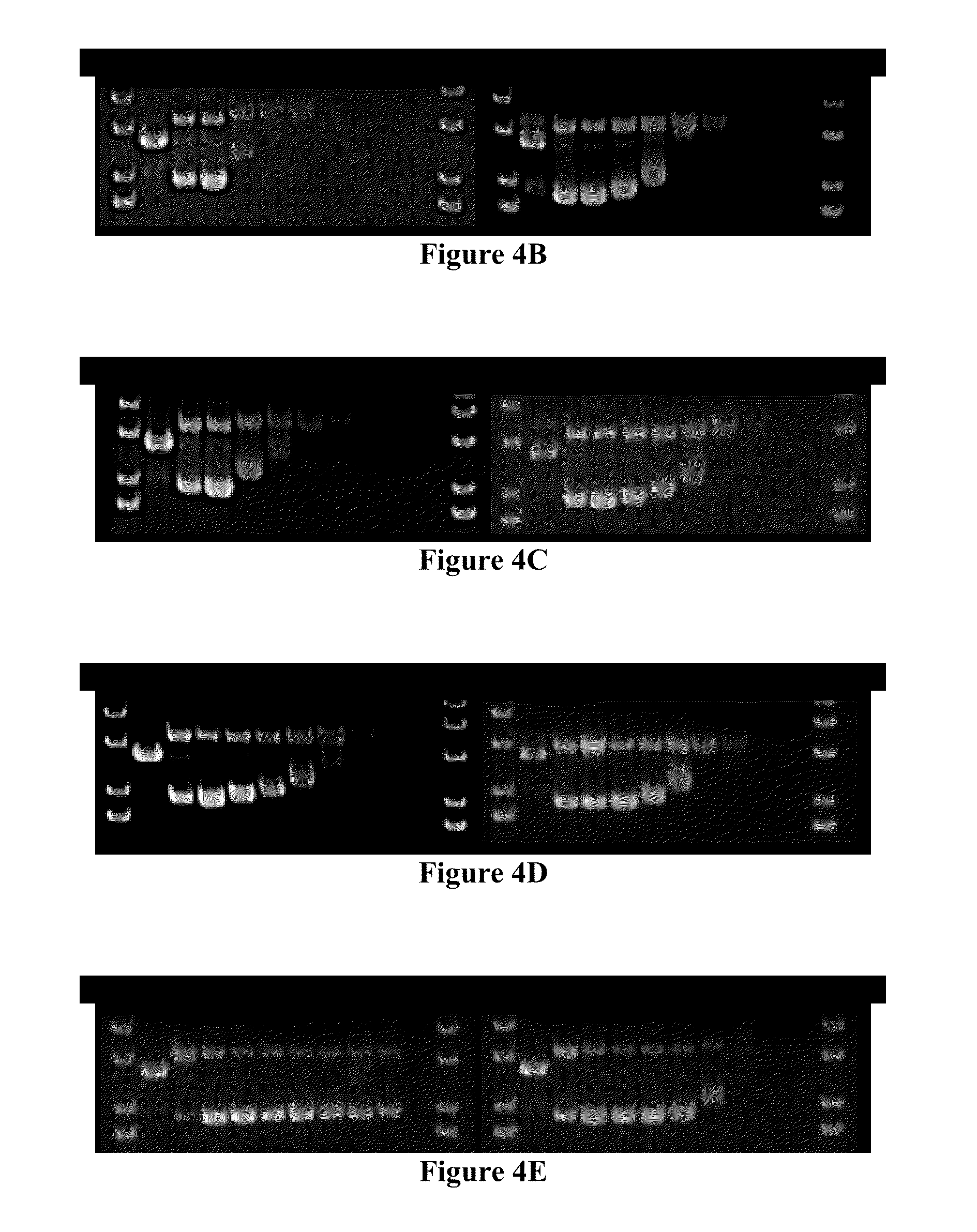Light-activated compounds
a technology of light-activated compounds and compounds, which is applied in the field of light-activated compounds, can solve the problems of limited pdt utility of oxygen and prolonged photosensitivity
- Summary
- Abstract
- Description
- Claims
- Application Information
AI Technical Summary
Benefits of technology
Problems solved by technology
Method used
Image
Examples
example 1
[0075]In this Example two heteroleptic complexes were synthesized containing one and two biquinoline (biq) ligands, and one or two smaller, non-strained 1,10-phenanthroline (phen) ligands, as shown in FIG. 1. The synthesis and purification was performed under low ambient light in order to avoid photo-decomposition. The addition of the biq ligands resulted in bathochromic shifts in the absorption spectra, as compared to Ru(phen)3, a prototypical Ru(II) polypyridyl complex with a λmax=450 nm for the low energy MLCT absorption. As shown in FIG. 1, addition of one biquinoline ligand in 1 shifts the MLCT to lower energies, with λmax=525 nm. Incorporation of two biquinoline ligands further shifts the λmax to 550 nm for 2. Expansion of the region from 600-900 nm shows that there is some absorption at 700 nm for 1, while 2 is able to absorb light up to 800 nm.
[0076]Analysis of the crystal structures for the biquinoline complexes provided a means to compare the extent of distortion in the gr...
example 2
[0085]In this Example three complexes with structural differences were explored to test the strain-mediated photoactivation approach (Table 3). The complexes were synthesized and characterized as a racemic mixture of A and A enantiomers. Ru(bpy)2phen (3) was used as an unstrained control. In order to distort the geometry about the octahedral metal center, polypyridyl ligands with methyl substituents were incorporated into the Ru(II) complexes; these groups are directed towards the other coordinating ligands, causing steric clashes. The complexes were readily prepared under low light conditions by refluxing the precursor Ru(bpy)2Cl2 with the desired ligand in ethylene glycol. They were purified by silica gel flash chromatography, and converted to chloride salts for testing.
[0086]Materials and General Methods
[0087]All chemicals for this Example were obtained from commercial sources and were used without further purification. Ru(bpy)2Cl2.2H2O was purchased from Strem Chemicals Inc. (Ne...
example 3
[0117]This Example describes a novel ruthenium complex containing a dppz derivative that undergoes photochemical ligand substitution reactions in the presence of DNA. The compound exhibited selective photochemistry to generate a ligand-deficient and reactive metal center, along with a free coordinating ligand, in the presence of nucleic acids and organic solvents. The compound was sensitive to the DNA tertiary structure, displaying different reactivities in duplex and G-quadruplex DNA, providing a mechanism for the development of DNA structure-selective probes and effectors.
[0118]Chemicals used for synthesis were purchased from suppliers and used without further purification. Calf thymus (CT) DNA was purchased from Sigma-Aldrich, re-suspended in buffer (50 mM NaCl, 5 mM Tris buffer, pH 7.0) and sonicated (bath sonicator for 40 min followed by 10-15 1 sec pulses with a Branson Sonifier 250 (duty cycle=90% and output control=2; Danbury, Conn.) to provide shorter strands. The 15-mer ol...
PUM
| Property | Measurement | Unit |
|---|---|---|
| wavelength | aaaaa | aaaaa |
| wavelength | aaaaa | aaaaa |
| pH | aaaaa | aaaaa |
Abstract
Description
Claims
Application Information
 Login to View More
Login to View More - R&D
- Intellectual Property
- Life Sciences
- Materials
- Tech Scout
- Unparalleled Data Quality
- Higher Quality Content
- 60% Fewer Hallucinations
Browse by: Latest US Patents, China's latest patents, Technical Efficacy Thesaurus, Application Domain, Technology Topic, Popular Technical Reports.
© 2025 PatSnap. All rights reserved.Legal|Privacy policy|Modern Slavery Act Transparency Statement|Sitemap|About US| Contact US: help@patsnap.com



